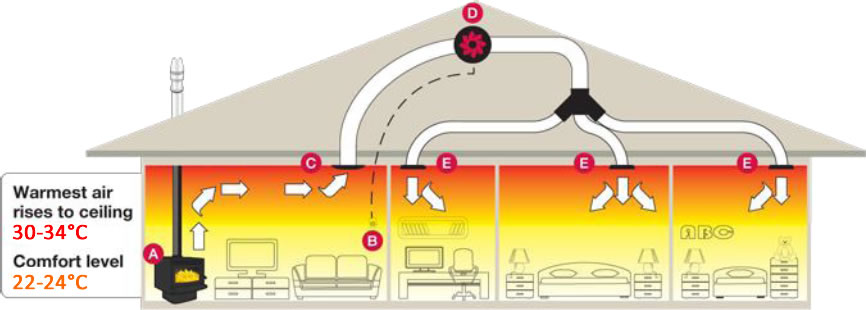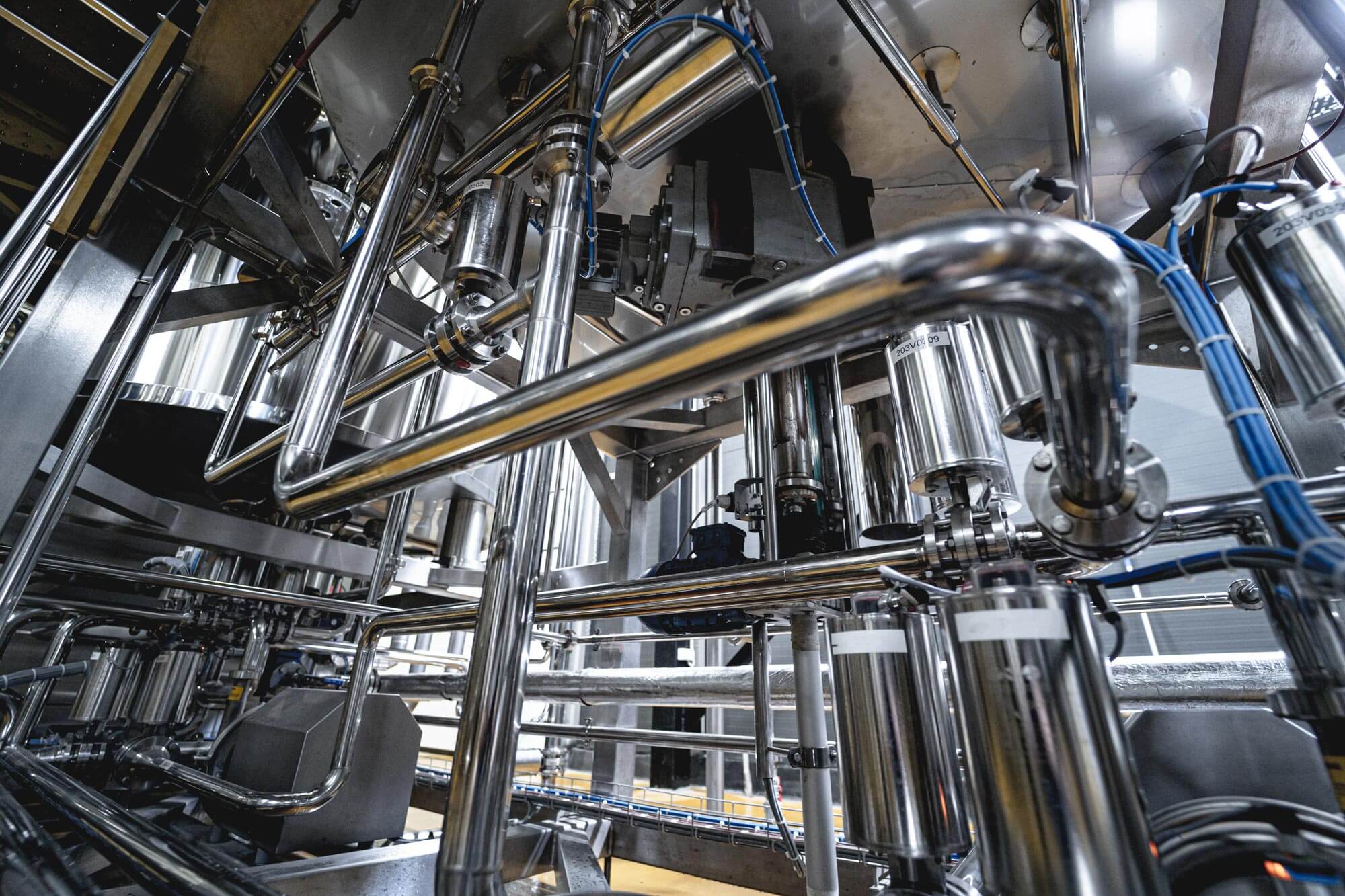Why DVS Heat Transfer Systems Are Reshaping Energy Efficiency in Industrial Cooling
Wiki Article
Developments in Heat Transfer Systems: What You Need to Know for Ideal Efficiency
Developments in Heat transfer systems are changing efficiency throughout different sectors. Advanced products like graphene and nanofluids assure substantial renovations in thermal conductivity. The assimilation of IoT and device discovering provides chances for real-time monitoring and enhanced energy effectiveness. The landscape of thermal monitoring is quickly advancing. Understanding these advancements is crucial for accomplishing excellent system efficiency and sustainability in the future. What specific developments are forming this transformation?Emerging Materials for Boosted Heat Transfer

Advanced Heat Exchanger Layouts
While traditional Heat exchangers have offered their objective in numerous applications, advanced styles are currently emerging to meet the raising needs for effectiveness and performance. These cutting-edge styles, such as plate, shell-and-tube, and finned-tube Heat exchangers, integrate enhanced surface and improved flow patterns to boost thermal transfer rates. Furthermore, compact layouts permit for minimized area demands without jeopardizing performance. Advanced materials, such as compounds and corrosion-resistant alloys, in addition enhance resilience and performance under extreme problems. Simulation technologies and computational fluid dynamics are increasingly used to refine these layouts, ensuring peak Heat transfer qualities. As industries seek to reduce energy consumption and maximize output, the fostering of advanced Heat exchanger designs is essential in achieving these purposes.The Function of Nanotechnology in Heat Transfer
Nanotechnology plays an important role in boosting thermal conductivity within Heat transfer systems. By adjusting materials at the nanoscale, scientists have attained considerable renovations in power effectiveness. These developments not just maximize efficiency yet also add to even more sustainable energy solutions.Enhanced Thermal Conductivity
Significant advancements in thermal conductivity have emerged with the application of nanotechnology, transforming Heat transfer systems across different industries. By incorporating nanoparticles into Heat transfer fluids and materials, scientists have actually achieved amazing boosts in thermal conductivity. These nanoparticles, such as carbon nanotubes, graphene, and metal oxides, improve the Heat transfer buildings because of their high area and distinct thermal features. The resulting compounds display enhanced performance in applications varying from electronic devices cooling down systems to eco-friendly power modern technologies. In addition, the ability to tailor the dimension, form, and structure of nanoparticles permits maximized thermal administration services. Consequently, nanotechnology remains to play a critical role in the advancement of a lot more reliable and effective Heat transfer systems, paving the means for enhanced industrial applications.
Power Efficiency Improvements

Assimilation of IoT in Heat Transfer Equipments
The assimilation of IoT in Heat transfer systems presents the implementation of wise sensing units that enhance operational performance. These sensing units enable real-time information monitoring, permitting immediate changes and optimizations. This technological innovation has the possible to substantially boost performance and power monitoring in Heat transfer applications.Smart Sensors Implementation
As Heat transfer systems evolve, the combination of wise sensing units through the Web of Points (IoT) has arised as a transformative strategy. These sensors enable real-time tracking of flow, stress, and temperature level rates, boosting system efficiency and dependability. By collecting and sending information, they promote positive upkeep, reducing the risk of system failings. Furthermore, smart sensing units contribute to energy savings by refining functional specifications based on ecological conditions. Their ability to examine abnormalities and fads permits notified decision-making, ensuring peak efficiency of Heat transfer systems. As industries significantly adopt this modern technology, the implementation of clever sensors stands to revolutionize how Heat transfer systems are handled, leading the method for greater sustainability and boosted efficiency end results.Real-Time Data Tracking
Just how can real-time information keeping an eye on improve the performance of Heat transfer systems? click this site By incorporating Internet of Points (IoT) modern technology, Heat transfer systems can leverage continuous data collection from smart sensing units. This real-time tracking permits instant analysis of circulation, pressure, and temperature level prices, allowing drivers to identify inadequacies without delay. Modifications can be made to maximize performance, minimize power consumption, and expand devices life expectancy. Additionally, predictive upkeep can be carried out, reducing unexpected downtime and expensive repair services. The capacity to envision performance metrics through control panels improves decision-making, fostering a positive approach to system management. Eventually, real-time data keeping an eye on not only enhances functional effectiveness but likewise adds to sustainability goals within commercial processes.Energy Performance and Sustainability Trends
Energy effectiveness and sustainability patterns are improving the landscape of Heat transfer systems, driving advancement and compliance throughout numerous markets. Organizations are increasingly focusing on energy-efficient designs to decrease functional costs and decrease ecological impacts. The integration of sustainable energy resources is becoming a lot more prevalent, allowing Heat transfer systems to operate sustainably while meeting regulative demands. Additionally, developments in innovations and products promote lower energy usage and boost general performance. Lifecycle assessments are additionally acquiring grip, allowing firms to evaluate the ecological effect of Heat transfer systems from production to disposal. This concentrate on sustainability not only sustains business responsibility but additionally positions companies competitively in a market where customers progressively prefer environment-friendly solutions. Consequently, energy effectiveness and sustainability continue to be vital considerations for future developments in Heat transfer innovation.Technologies in Thermal Monitoring Solutions
While the demand for effective Heat transfer remains to climb, technologies in thermal administration options are emerging to address both performance and sustainability challenges. Advanced materials, such as phase adjustment products and nanofluids, are being created to improve Heat transfer effectiveness - DVS Heat Transfer Systems. These materials enhance thermal conductivity and allow for far better temperature regulation in various applications. In addition, innovations like energetic thermal control systems are acquiring traction, making it possible for real-time adjustments to manage Heat circulation properly. These systems add to power financial savings and decrease the environmental effect of thermal processes. The combination of IoT in thermal administration assists in tracking and anticipating upkeep, making certain optimized efficiency and durability of Heat transfer systems. Generally, these advancements represent considerable strides toward more lasting thermal management techniquesFuture Directions in Heat Transfer Innovation
Emerging improvements in thermal management services signify a promising future for Heat transfer innovation. Scientists are significantly focusing on developing products with exceptional thermal conductivity and boosted power performance. Innovations such as nanofluids, which have suspended nanoparticles, supply substantial enhancements in Heat transfer efficiency. Furthermore, the combination of clever products that adapt to varying temperature problems is acquiring grip, permitting for even more receptive and effective systems. The rise of additive production techniques is additionally allowing the style of intricate Heat exchanger geometries that maximize fluid flow. In addition, the application of device learning algorithms is expected to revolutionize the optimization of Heat transfer systems, helping with predictive maintenance and performance enhancement. Jointly, these improvements are poised to transform the landscape of Heat transfer innovations in various industries.
Frequently Asked Questions

How Do I Select the Right Heat Transfer System for My Application?
Choosing the ideal Heat transfer system entails assessing application requirements, including temperature level ranges, fluid buildings, and efficiency demands. Examining system types, maintenance website link factors to consider, and cost-effectiveness additionally plays a necessary duty in making a notified choice.What Are the Maintenance Demands for Advanced Heat Exchangers?
Maintenance requirements for sophisticated Heat exchangers normally include routine examinations, monitoring for leaks, cleaning of surfaces, and assuring suitable flow prices. Complying with maker standards assurances effective procedure and lengthens the devices's lifespan.
How Do Environmental Variables Impact Heat Transfer Performance?
Ecological aspects considerably affect Heat transfer performance. Variants in air flow, humidity, and temperature influence thermal conductivity and convective Heat transfer, inevitably influencing system performance and requiring factor to consider during the design and procedure of Heat transfer systems.What Security Standards Put On Heat Transfer Equipments?
Safety requirements for Heat transfer systems generally consist of standards from companies such as ASME and ASTM. DVS Heat Transfer Systems. These standards address materials, style, and functional techniques to assure reliability, performance, and protection versus hazards go to website in various applications
How Can I Fix Usual Heat Transfer System Issues?
Fixing typical Heat transfer system issues includes checking for leaks, making sure proper liquid flow, evaluating insulation integrity, and confirming temperature level differentials. Recognizing these variables can help preserve system effectiveness and prevent more complications.Nanotechnology plays an essential function in improving thermal conductivity within Heat transfer systems. Significant advancements in thermal conductivity have emerged through the application of nanotechnology, transforming Heat transfer systems across numerous markets. Developments in thermal conductivity through nanotechnology have paved the method for impressive enhancements in power effectiveness within Heat transfer systems. Energy effectiveness and sustainability fads are improving the landscape of Heat transfer systems, driving innovation and compliance across numerous sectors. The integration of IoT in thermal management facilitates monitoring and anticipating upkeep, ensuring maximized performance and long life of Heat transfer systems.
Report this wiki page